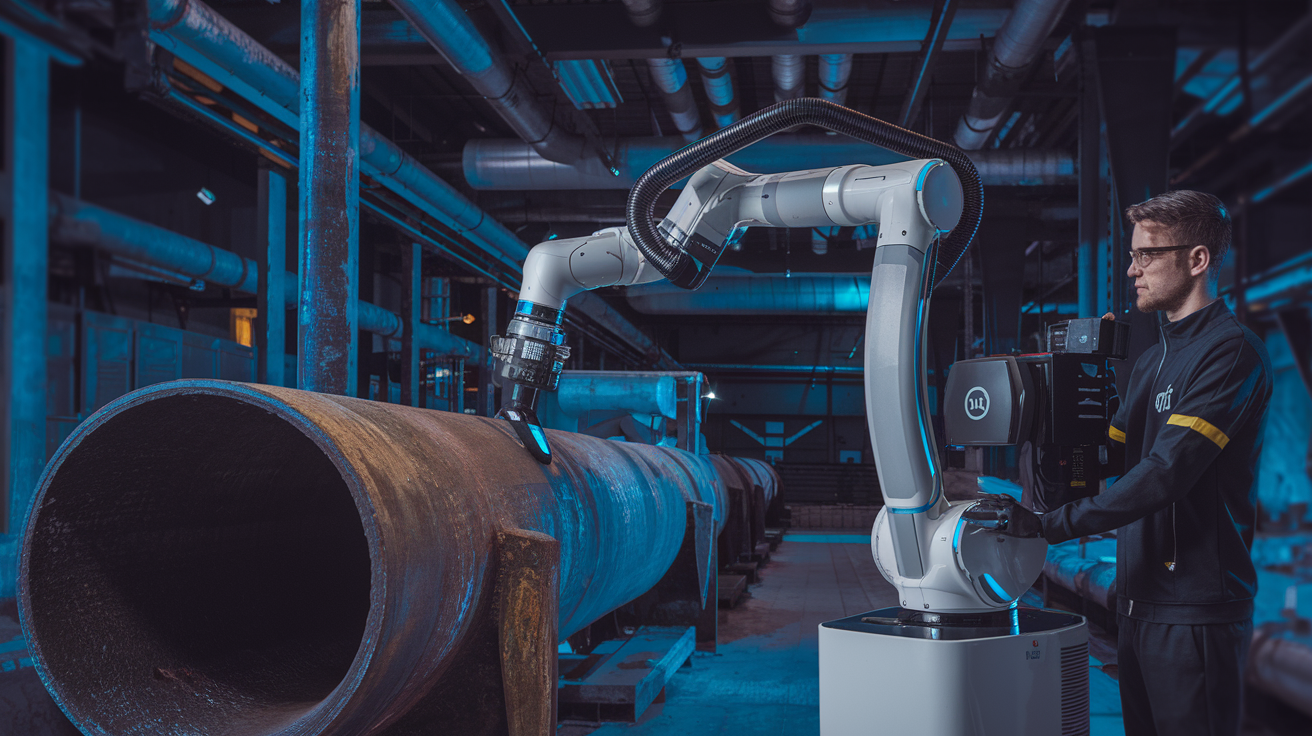Energy Robotics, a company specializing in hardware-independent software for autonomous inspections, has announced that it has successfully secured $13.5 million in Series A funding. This investment aims to enhance the efficiency and safety of inspections for critical infrastructures, especially in hazardous environments.
Funding and Its Implications
Marc Dassler, co-founder and CEO of Energy Robotics, emphasized that this funding will enable the company to scale its autonomous solutions to meet the needs of industries such as energy, chemicals, utilities, and security. He highlighted the challenges posed by a retiring skilled workforce and the aging infrastructure that requires more frequent monitoring and maintenance.
Technological Innovations
Founded by a team from the Technical University of Darmstadt, Energy Robotics offers an AI-driven software platform designed for autonomous industrial inspections. The company’s hardware-agnostic system provides actionable insights directly integrated into client workflows, improving both safety and efficiency. Operating across five continents, Energy Robotics has completed over 1 million inspections, resulting in significant labor savings.
Cost Reduction and Operational Efficiency
Energy Robotics claims that its solutions can reduce operational costs by up to 40%. Their comprehensive AI platform is capable of performing visual inspections, thermal scans, and leak detection, all while minimizing human risk and errors. The company’s offerings include:
-
Hardware-agnostic operating system: This system can integrate with various robots and drones from manufacturers like Boston Dynamics and DJI, allowing customers to create mixed fleets without vendor lock-in.
-
AI-powered analytics: The advanced analytics library interprets multimodal sensor data and continuously improves its performance through machine learning.
-
Simple mission control: The platform uses a large language model (LLM) to enable operators to easily prompt and execute inspection tasks across multiple robotic units.
-
Real-world data utilization: The autonomous operations are based on extensive data from real-world facilities, ensuring high reliability.
-
Dynamic digital twins: Each inspection automatically updates a live digital replica of facilities, providing predictive insights that integrate with customer management systems.
-
Data privacy and cybersecurity: The company ensures that sensitive inspection data remains within the customer’s IT systems, independent of external software platforms.
Market Response and Investor Support
The funding round was co-led by Blue Bear Capital and Climate Investment (CI), with additional participation from Futury Capital, Hessen Capital, Kensho VC, and TADTech. The investment is expected to accelerate the deployment of Energy Robotics’ software across various sectors, enhancing efficiency and sustainability.
Cindi Bough, managing director at CI, noted that the industrial robotics market is at a pivotal moment, with Energy Robotics contributing to climate impact by using autonomous robots to detect gas leaks early. This proactive approach allows harmful emissions to be addressed before they escape into the atmosphere.
Dr. Carolin Funk, partner at Blue Bear Capital, added that the global energy transition relies heavily on resilient and efficient infrastructure. The autonomous inspection platform developed by Energy Robotics directly addresses these needs, providing scalable solutions that enhance safety and operational efficiency.
Future Plans and Developments
In a recent discussion with The Robot Report, Marc Dassler shared insights on the company’s future plans following the investment. He indicated that the primary focus will be on executing market strategies and expanding global infrastructure. Additionally, the funding will facilitate deeper integration of AI and LLM technologies into their platform, enhancing the management of extensive fleets of robots and drones in critical infrastructure.
Hiring and Market Trends
Energy Robotics is actively seeking skilled professionals in areas such as go-to-market strategies, DevOps, robot operations, and development. This recruitment drive aligns with the increasing demand for robot technology in various sectors.
As the industrial robotics market matures, Dassler noted a noticeable shift in customer requests for batch deployments of robots and drones, indicating rapid growth in technology capabilities. The company has achieved high reliability in AI-driven data processing, allowing for seamless integration of collected data into core operational processes.
Sector-Specific Demand
When discussing market trends, Dassler identified the oil and gas sector, particularly in the EU, Middle East, and U.S., as experiencing the fastest growth. This increase is driven by enhanced safety standards, the urgent need for emission detection, and the pressure to minimize operational expenses against the backdrop of a shrinking skilled workforce. Meanwhile, the solar and renewables sectors are also seeing growth, albeit less significantly affected by labor shortages.
In the Middle East, the situation is unique, as outdoor operations in the oil and gas sector are challenged by extreme heat, limiting the time workers can safely operate outside. This creates a compelling case for deploying robots to handle crucial tasks in such conditions.
Energy Robotics is poised to play a significant role in the future of autonomous inspections across various critical industries. With substantial funding and a commitment to innovation, the company is well-positioned to enhance operational efficiency and safety in challenging environments.
